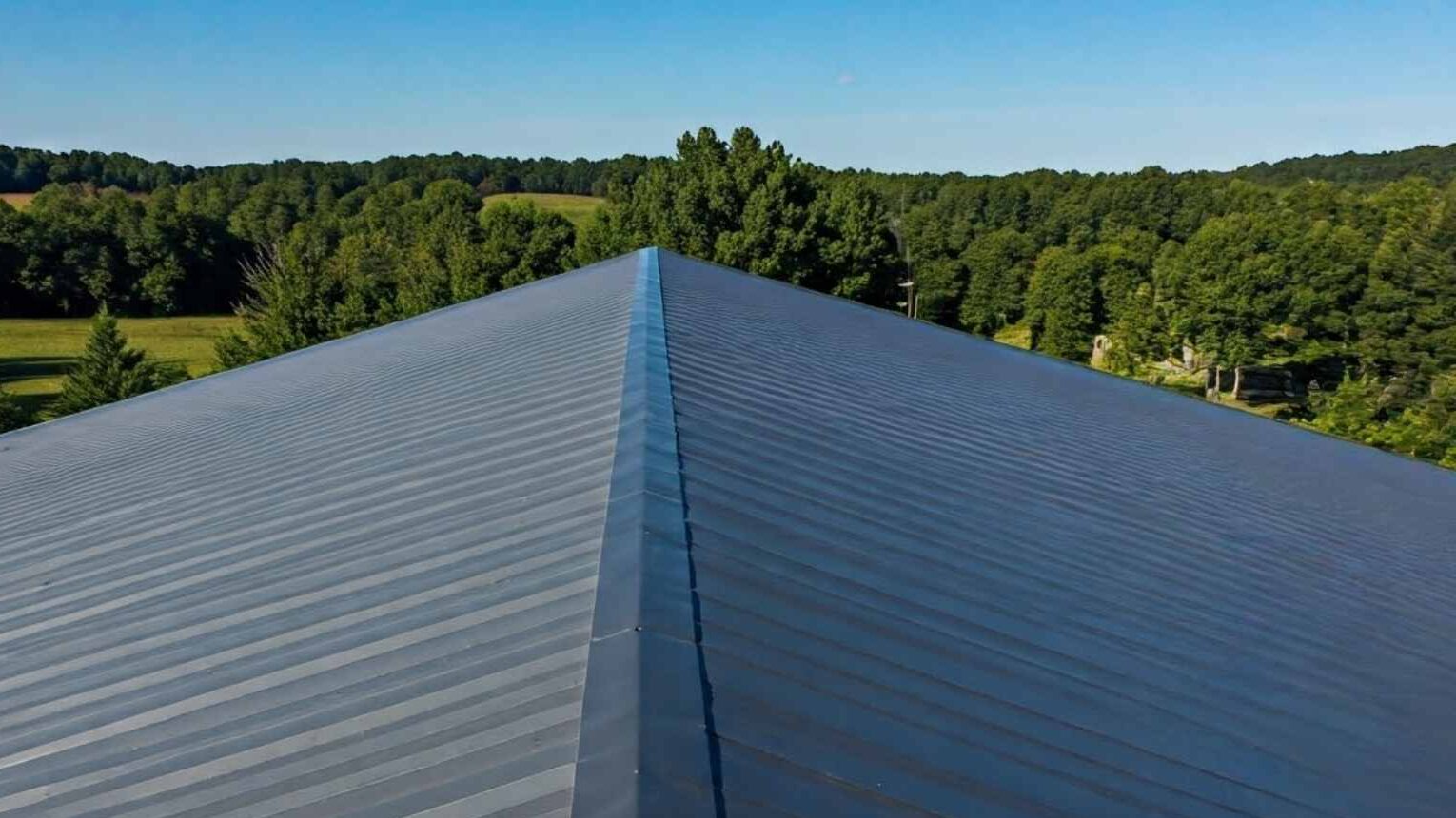
Key Highlights
- Ice and water shield safeguards metal roofs against leaks caused by ice dams and wind-driven rain.
- It provides a layer of protection between the metal roof and the roof deck, preventing water damage.
- Properly installed ice and water shield enhances the longevity of your metal roof.
- Understanding the installation process is crucial for optimal performance.
- Consulting with experienced roofing contractors ensures proper installation and material selection.
Introduction
A metal roof is a durable and long-lasting roofing option, but it needs proper protection from the elements, especially moisture. That’s where ice and water shield plays a critical role. Serving as an essential roofing underlayment, it provides a waterproof barrier against water intrusion, giving homeowners peace of mind. This comprehensive guide will cover the importance of covering the entire roof, installation, and benefits of this crucial component for metal roofs.
The Importance of Ice and Water Shield for Metal Roofs

While metal roofing is known for its longevity, it’s vital to remember that the breathable underlayment is equally important for its overall performance. Ice and water shield forms a critical line of defense against water damage, which can be particularly problematic in areas with heavy snowfall or frequent rain.
Investing in a high-quality ice and water shield is investing in the long-term durability and effectiveness of your metal roof, saving you costly repairs in the future.
Why Your Metal Roof Needs an Ice and Water Shield
Imagine this scenario: melting snow on your metal roof refreezes at the edges, creating an ice dam. This dam prevents water from properly draining, increasing the risk of water intrusion. Ice and water shield acts as a safeguard against this issue.
Even with a meticulously installed metal roofing system, tiny gaps can occur, making your roof susceptible to wind-driven rain. Ice shield provides an extra layer of protection, preventing water from seeping into these vulnerabilities and causing damage to the roof deck and the interior of your home.
Enhancing Roof Longevity with Ice and Water Shield Protection
Beyond water protection, ice and water shield offers additional benefits that enhance the lifespan of your metal roof. Many products are engineered to provide thermal stability, acting as a radiant barrier that helps regulate the temperature in your attic. This can contribute to energy savings and increased comfort within your home.
Furthermore, ice and water shield with superior adhesion capabilities creates a secure bond with the roof deck, delivering all the advantages of grace ice. This bond minimizes the movement of the metal panels due to temperature fluctuations, reducing the likelihood of wear and tear over time.
Installation Tips for Ice and Water Shield on Metal Roofs

The effectiveness of your ice and water shield hinges on proper installation. Understanding the key steps involved in the process ensures optimal performance and long-lasting protection for your metal roof.
Preparing Your Roof for Ice and Water Shield Installation
Before you begin, ensure your roof deck is clean, dry, and free of debris, including any old felts. This will ensure better adhesion of the ice and water shield. Pay close attention to areas around chimneys, vents, and skylights, as these require careful sealing. If you’re working with complex metal roof assemblies or have concerns about proper ventilation, consider consulting with an experienced roofing contractor.
Consider installing ice and water shield along the exterior wall flashing for added protection. This helps prevent water from entering your home in areas where the roof meets the wall.
Step-by-Step Guide to Installing Ice and Water Shield
Installing ice and water shield, while straightforward, requires attention to detail:
- Roll Out the Membrane: Begin by rolling out the ice and water shield horizontally, starting from the eaves and overlapping each subsequent layer by at least 2 inches.
- Secure with Fasteners: Use specialized roofing fasteners to secure the membrane to the roof deck. Be sure to place fasteners according to the manufacturer’s recommendations for optimal holding power.
- Seal Seams: Overlap the edges of the ice and water shield, and use a roller to ensure a watertight seal. This is especially important for areas around valleys, dormers, and other transitions where water is more likely to accumulate.
- Standing Seam Considerations: For standing seam metal roofs, install the ice and water shield under the metal panels, ensuring the membrane extends up the wall flashing and overlaps the roof deck by at least 6 inches.
Conclusion
Ice and water shield is a crucial component for enhancing the durability of metal roofs against weather elements. By providing an extra layer of protection, it helps prevent water infiltration and prolongs the lifespan of your roof. Proper installation is key to reaping the benefits of this shield. Follow our step-by-step guide to ensure a successful application. Investing in ice and water shield can save you from costly repairs in the long run, making it a wise choice for safeguarding your metal roof. If you want to protect your roof from potential damage, consider installing ice and water shield today.
At “Metal Roof Mobile AL”, we ensure our clients receive the best possible outcomes. Our commitment to quality workmanship and customer satisfaction is unwavering, making us the top choice for residential Roofing services in our community.
Frequently Asked Questions
How Does Ice and Water Shield Protect Against Weather Damage?
Ice and water shield creates a waterproof barrier that prevents water from penetrating the roof deck. It withstands high temperatures, UV exposure, and the elements, offering long-lasting protection for various metal roofing materials, including zinc roofing, metal shingles, asphalt, and copper.
